Arrhythmia-Induced Cardiomyopathy: Key Points
American College of Cardiology
JUNE 3, 2024
The following are key points to remember from a state-of-the-art review on arrhythmia-induced cardiomyopathy (AiCM).
This site uses cookies to improve your experience. By viewing our content, you are accepting the use of cookies. To help us insure we adhere to various privacy regulations, please select your country/region of residence. If you do not select a country we will assume you are from the United States. View our privacy policy and terms of use.

American College of Cardiology
JUNE 3, 2024
The following are key points to remember from a state-of-the-art review on arrhythmia-induced cardiomyopathy (AiCM).

Circulation
NOVEMBER 11, 2024
Ischemic cardiomyopathy, a severe cardiac condition resulting from prolonged myocardial ischemia, is characterized by ventricular dilation, dysfunction, and an increased risk of life-threatening arrhythmias. Arrhythmia, a common complication in ischemic cardiomyopathy, is associated with poor clinical outcomes.

HeartRhythm
APRIL 30, 2024
Arrhythmias are common in patients with hypertrophic cardiomyopathy (HCM) and are associated with increased morbidity and mortality. Ventricular arrhythmias (VA) are less common compared to supraventricular arrhythmias yet are associated with worse outcomes in this patient population.

Journal of Cardiothoracic Surgery
SEPTEMBER 22, 2024
Arrhythmogenic right ventricular cardiomyopathy (ARVC) is a family inherited cardiomyopathy associated with ventricular arrhythmias. With the development of molecular biology, histology, imaging, and other dia.

Frontiers in Cardiovascular Medicine
DECEMBER 18, 2023
Background Chagas cardiomyopathy (CHCM) is the most important clinical manifestation of Chagas disease. The analysis of cardiac miRNAs may contribute to predicting the progression to CHCM in Chagas indeterminate phase and/or to the differential diagnosis for cardiomyopathy.

HeartRhythm
APRIL 30, 2024
It has been approved for use in patients with severe obstructive hypertrophic cardiomyopathy (oHCM). Currently, there has been little data on ventricular arrhythmias in patients treated with mavacamten.
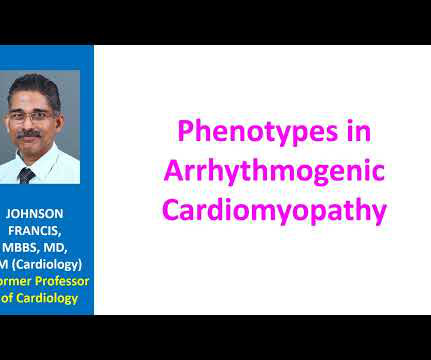
All About Cardiovascular System and Disorders
FEBRUARY 24, 2024
Arrhythmogenic Cardiomyopathy was better known as Arrhythmogenic Right Ventricular Dysplasia or ARVD and sometimes as Arrhythmogenic Right Ventricular Cardiomyopathy or ARVC earlier. A study published in JACC has compared the phenotypic expression and clinical outcomes in patients with arrhythmogenic cardiomyopathy [2].

Circulation
NOVEMBER 11, 2024
She underwent a cesarean section at 32 weeks given ongoing arrhythmia and heart failure symptoms. Her arrhythmia burden continued to lessen. Cardiomyopathy and arrhythmia have been described in a small number of cases. Initiation of guideline-directed medical therapy was limited by hypotension and pregnancy.

HeartRhythm
APRIL 30, 2024
Cardiac Sympathetic Denervation (CSD) has proven efficacy in Long-QTS syndrome (LQTS) patients with refractory ventricular arrhythmia (VA).1 1 However, owing to the limited prevalence of this procedure, outcomes in patients with other genetic cardiomyopathies remain less understood.

HeartRhythm
NOVEMBER 10, 2023
In arrhythmogenic right ventricular cardiomyopathy (ARVC), risk of atrial arrhythmias (AA) persists after ventricular tachycardia (VT) ablation.

Medical Xpress - ECG
APRIL 17, 2023
Thirty day electrocardiogram (ECG) monitoring in patients with hypertrophic cardiomyopathy (HCM) detects more arrhythmias than the standard 24 to 48 hours, according to late breaking science presented at EHRA 2023, a scientific congress of the European Society of Cardiology (ESC).

HeartRhythm
APRIL 30, 2024
Decisions as to the scope of workup for pathologic cardiac substrates in patients with ventricular arrhythmias can be challenging. Recent data suggests that in this scenario, disease specific genetic arrhythmia panels may miss heritable diagnoses over arrhythmic plus cardiomyopathy panels.(1)

Circulation: Arrhythmia and Electrophysiology
AUGUST 30, 2024
Circulation: Arrhythmia and Electrophysiology, Ahead of Print. BACKGROUND:Increased mitochondrial Ca2+uptake has been implicated in the QT prolongation and lethal arrhythmias associated with nonischemic cardiomyopathy. In a heterologous expression system, c-Src could bind MCU and phosphorylate MCU tyrosines.
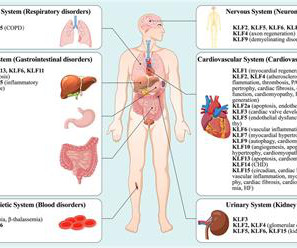
Frontiers in Cardiovascular Medicine
MARCH 6, 2024
Cardiomyopathy, a heterogeneous pathological condition characterized by changes in cardiac structure or function, represents a significant risk factor for the prevalence and mortality of cardiovascular disease (CVD). Research conducted over the years has led to the modification of definition and classification of cardiomyopathy.
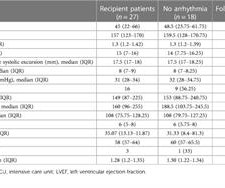
Frontiers in Cardiovascular Medicine
JANUARY 10, 2024
Introduction Heart transplantation (HT) is the only treatment option in children with heart failure secondary to cardiomyopathies and non-reparable congenital heart diseases. 24 patients (88.8%) were diagnosed with dilated cardiomyopathy, 2 (7.4%) with restrictive cardiomyopathy, and 1 (3.7%) with hypertrophic cardiomyopathy.
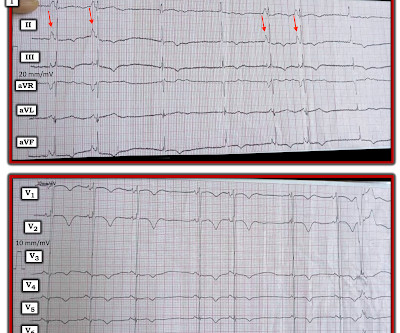
Ken Grauer, MD
SEPTEMBER 15, 2024
For full discussion of the case — CLICK HERE — ECG Rhythm Overview: A 12-year-old boy was admitted to our hospital with severe myocardial dysfunction and chaotic rhythm with tachy- and bradycardic arrhythmias. Hope this helps — :) ECG-3 — I see sinus bradycardia and arrhythmia.

HeartRhythm
APRIL 30, 2024
Introduction: Pathogenic desmoplakin (DSP) variants are associated with left or biventricular arrhythmogenic cardiomyopathy. Exercise promotes penetrance and sustained ventricular arrhythmias (VA) in classic ARVC. It is unknown if exercise affects risk in DSP variant carriers.
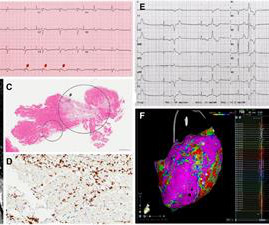
Frontiers in Cardiovascular Medicine
MARCH 13, 2024
Peripartum Cardiomyopathy (PPCM) is a polymorphic myocardial disease occurring late during pregnancy or early after delivery. The issue is relevant since some arrhythmias are associated to sudden cardiac death occurring in young patients, and the overall risk does not cease during the early postpartum period.

Circulation
NOVEMBER 11, 2024
Background:Despite the role of cardiac catheterization for hemodynamic assessment and endomyocardial biopsy (EMB) in children with cardiomyopathy, data on procedure-related major adverse events (MAE) in this population is lacking. We aim to describe the rate of MAE in children with cardiomyopathy undergoing cardiac catheterization.

HeartRhythm
APRIL 30, 2024
Risk stratification in patients with non-ischemic cardiomyopathy (NICM) remains challenging. Although late gadolinium enhancement (LGE) CMR is recognized as a major risk factor for VT/VF, the prognostic value of LGE radiomics is unknown.

Circulation: Genomic and Precision Medicine
FEBRUARY 28, 2024
Dilated cardiomyopathy (DCM) is a common heart muscle disorder of nonischemic etiology associated with heart failure development and the risk of malignant ventricular arrhythmias and sudden cardiac death. Circulation: Genomic and Precision Medicine, Ahead of Print.

HeartRhythm
AUGUST 18, 2024
Arrhythmogenic right ventricular cardiomyopathy (ARVC) is a rare genetic heart disease associated with life-threatening ventricular arrhythmias. Diagnosis of ARVC is based on the 2010 Task Force Criteria (TFC), application of which often requires clinical expertise at specialized centers.
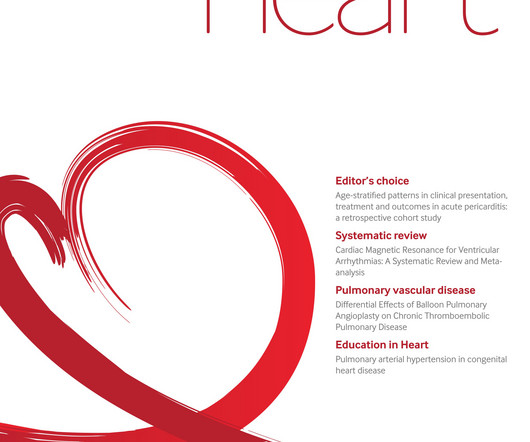
Heart BMJ
AUGUST 26, 2024
Background Cardiac magnetic resonance (CMR) allows comprehensive myocardial tissue characterisation, revealing areas of myocardial inflammation or fibrosis that may predispose to ventricular arrhythmias (VAs). A change in diagnosis after use of CMR ranged from 21% to 66% with a pooled average of 35% (29%–41%). to 2.42).
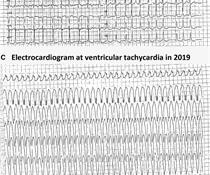
Frontiers in Cardiovascular Medicine
MARCH 27, 2024
Introduction Danon disease is an X-linked disorder caused by pathogenic variants in lysosome-associated membrane protein 2 ( LAMP2 ) gene, typically characterized by the triad of hypertrophic cardiomyopathy, myopathy, and intellectual disability. However, many patients may not present the typical presentation, especially in the early stage.
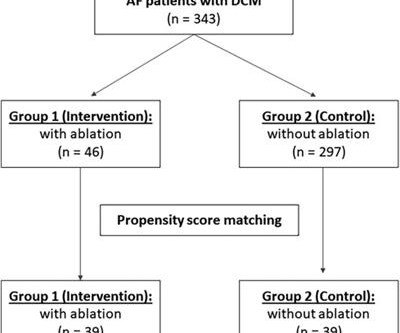
Frontiers in Cardiovascular Medicine
JANUARY 16, 2024
Nevertheless, studies on the long-term outcomes of catheter ablation in patients with dilated cardiomyopathy are limited. The recurrence rate of atrial arrhythmia was 30.4% ( n = 14) after an average follow-up duration of 7.7 Introduction Catheter ablation is an effective and safe strategy for treating atrial fibrillation patients.

HeartRhythm
AUGUST 13, 2024
Cardiac amyloidosis (CA) involves the abnormal accumulation of misfolded proteins in the heart muscle, leading to restrictive cardiomyopathy.1 Atrial arrhythmias (AA), particularly atrial fibrillation (AF), are prevalent in CA and may impact long-term cardiovascular outcomes, prompting an investigation into early rhythm management strategies.2

HeartRhythm
NOVEMBER 27, 2023
Arrhythmogenic cardiomyopathy (ACM) is a heart muscle disease characterized by replacement of ventricular myocardial by fibrofatty scar tissue which underlies morpho-functional ventricular abnormalities and life-threatening ventricular arrhythmias potentially responsible of sudden cardiac death (SCD), mostly in young people and athletes 1,2.
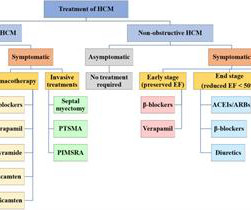
Frontiers in Cardiovascular Medicine
JUNE 3, 2024
Hypertrophic cardiomyopathy (HCM) is a very prevalent inherited disease with a wide global distribution and a prevalence rate of approximately 0.2% in the general population. Left ventricular hypertrophy (LVH) caused by sarcomere mutation is the primary reason of HCM.

Circulation: Arrhythmia and Electrophysiology
NOVEMBER 29, 2023
Circulation: Arrhythmia and Electrophysiology, Ahead of Print. Atrial cardiomyopathy is a condition that causes electrical and contractile dysfunction of the atria, often along with structural and functional changes.

HeartRhythm
APRIL 30, 2024
Duchenne muscular dystrophy (DMD) is an X-linked inherited disorder characterized by progressive muscle wasting and dilated cardiomyopathy. With improved multi-disciplinary care patients with left ventricular (LV) dysfunction surviving to older ages may be at risk for arrhythmias.

HeartRhythm
AUGUST 25, 2023
Among patients with ischemic cardiomyopathy (ICM) and nonischemic cardiomyopathy (NICM), myocardial fibrosis is associated with an increased risk for ventricular arrhythmia (VA). Growing evidence suggests that myocardial fat contributes to ventricular arrhythmogenesis.

HeartRhythm
APRIL 30, 2024
The efficacy of implantable cardioverter-defibrillators (ICD) in patients with a non-ischaemic cardiomyopathy (NICM) is being debated. Deep Learning models enable feature extraction from high-dimensional data, such as cardiac MRI (CMR) and ECG.

Circulation: Genomic and Precision Medicine
JANUARY 30, 2024
BACKGROUND:Pathogenic variants in PKP2 (plakophilin-2) cause arrhythmogenic right ventricular cardiomyopathy, a disease characterized by life-threatening arrhythmias and progressive cardiomyopathy leading to heart failure. Circulation: Genomic and Precision Medicine, Ahead of Print. In contrast, AAVrh.74-PKP2a–mediated

HeartRhythm
FEBRUARY 22, 2024
Arg14del) variant carriers are at risk of developing malignant ventricular arrhythmias (MVA). Phospholamban (PLN) p.(Arg14del) Accurate risk stratification allows for timely implantation of intracardiac defibrillators (ICD) and is currently performed using a multimodality prediction model.
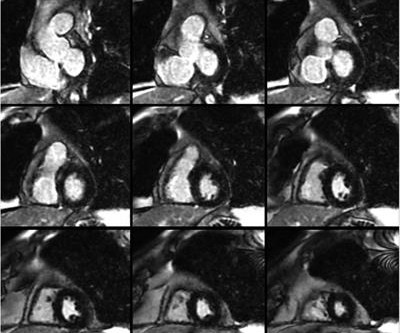
Frontiers in Cardiovascular Medicine
DECEMBER 18, 2023
Background Pathogenic/Likely pathogenic variants in DSP -encoded desmoplakin are strongly associated with arrhythmogenic cardiomyopathy (ACM). Workup including echocardiography, cardiac magnetic resonance imaging, and Holter monitor did not show evidence of ACM or significant arrhythmias.

HeartRhythm
APRIL 2, 2024
Cheng and Zhang to our paper1, we note that despite ARVC being a relatively uncommon cardiomyopathy, we uniquely report on a large clinical experience with very long-term follow-up after VT ablation and confirm a high incidence of atrial flutter (AFL) and the effectiveness and low risk of catheter ablation of AFL. In response to Drs.

HeartRhythm
SEPTEMBER 14, 2023
Arrhythmogenic right ventricular cardiomyopathy (ARVC) is a genetic cardiomyopathy resulting from disordered function of the intercalated discs with mainly arrhythmic manifestation, which can be difficult to diagnose because of its variable presentation. The incidence of ARVC is reported to be 1:2000 to 1:5000.

HeartRhythm
APRIL 30, 2024
Hypertrophic cardiomyopathy (HCM) is associated with a predisposition to lethal ventricular arrhythmias. LGE scar burden on MRI is thought to contribute to this risk, but its impact on electrophysiological substrate is not well understood.

European Journal of Heart Failure
FEBRUARY 26, 2024
Dilated cardiomyopathy with arrhythmic phenotype. Abstract Aims Dilated cardiomyopathy (DCM) with arrhythmic phenotype combines phenotypical aspects of DCM and predisposition to ventricular arrhythmias, typical of arrhythmogenic cardiomyopathy. During a median follow-up of 6 years (interquartile range 1.6–12.1),

All About Cardiovascular System and Disorders
APRIL 30, 2024
Hypertrophic cardiomyopathy is a genetic disorder with a guarded prognosis which occurs in about 1:500 individuals. The most common symptom of hypertrophic cardiomyopathy is dyspnoea which occurs in 90% of cases and is due to elevated left ventricular diastolic pressures as a consequence of the diastolic dysfunction.

HeartRhythm
APRIL 30, 2024
Arrhythmogenic right ventricular cardiomyopathy (ARVC), often caused by mutations in Plakophilin-2 (PKP2) is characterized by high propensity to life-threatening arrhythmias and loss of myocytes.

HeartRhythm
SEPTEMBER 4, 2023
An abnormal myocardial Ca2+ transient is linked to heart failure and ventricular arrhythmias. This narrative review evaluates the role of aberrant Ca2+ release synchrony in the pathophysiology of cardiomyopathies and ventricular arrhythmias.

Heart BMJ
JANUARY 10, 2024
Arrhythmogenic right ventricular cardiomyopathy (ARVC) is a disease characterised by fibrofatty replacement of the ventricular myocardium due to specific mutations, leading to ventricular arrhythmias and sudden cardiac death. channels, Connexin 43 and Wnt signalling, potentially modifying myocardial fibrosis.
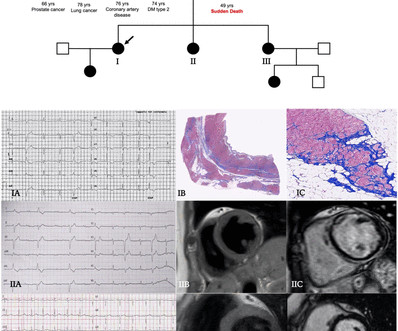
Open Heart
APRIL 20, 2022
Objectives To describe a cohort of patients with arrhythmogenic left ventricular cardiomyopathy (ALVC), focusing on the spectrum of the clinical presentations. Twenty-one (41%) had normal echocardiogram, 13 (25%) a hypokinetic non-dilated cardiomyopathy (HNDC) and 17 (33%) a dilated cardiomyopathy (DCM).
Expert insights. Personalized for you.
We have resent the email to
Are you sure you want to cancel your subscriptions?


Let's personalize your content